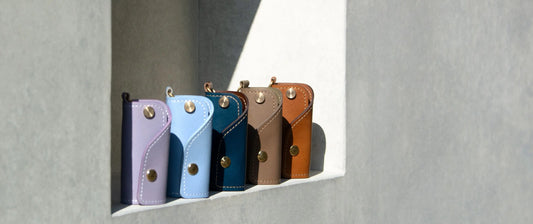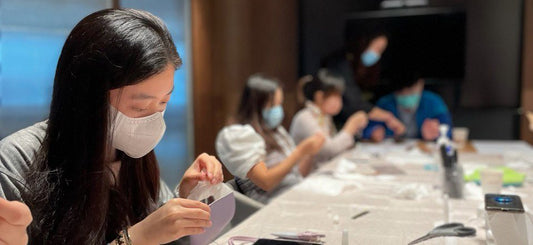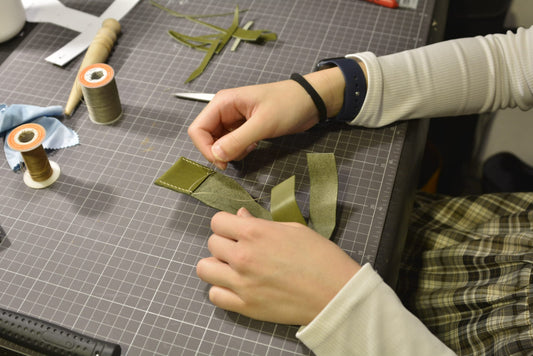
Leather vs. Vegan Alternatives: What You Need to Know
Share
When it comes to quality, durability, and timeless appeal, nothing quite matches the craftsmanship and natural beauty of genuine leather. While vegan alternatives have grown in popularity, especially among those who prefer cruelty-free options, traditional leather made from animal hides remain a superior choice for those seeking long-lasting, high-quality products. In this blog, we’ll explore why animal hide leather still stands out in the leather goods market and how it compares to its synthetic counterparts.
The Timeless Appeal of Animal Hide Leather
Animal hide leather has stood the test of time for a reason: its strength, durability, and natural beauty make it an unparalleled choice in the world of fashion and accessories. Leather is a natural material that undergoes a process of tanning, turning the hide into a durable, flexible, and long-lasting material. Here’s why animal hide leather remains the gold standard.
Durability
Genuine leather, such as Italian veg-tanned leather, is built to last. A high-quality leather bag can last for decades, aging gracefully with each use and developing a unique patina.
Natural Look & Feel
Leather offers a rich, tactile experience that synthetic materials struggle to replicate. Its texture and appearance evolve over time, offering a personalized touch that vegan leather cannot match.
Breathability
Unlike plastic-based synthetic alternative, leather is a breathable material, which makes it more comfortable for long-term wear, especially in accessories like bags and jackets.
When you invest in genuine leather, you’re not just buying a product, you’re buying a piece of craftsmanship that will age beautifully and stand the test of time. Leather’s durability and timeless appeal make it the ideal choice for those looking for long-lasting quality.
What is Vegan Leather Actually?
Vegan leather, also called aux leather, PU leather, or pleather, is a synthetic material designed to mimic the appearance of genuine leather without using animal products. It’s typically made from plastic-based material like polyurethane (PU) or polyvinyl chloride (PVC).
In recent years, some “plant-based” vegan leathers have emerged, claiming to be more eco-friendly. These materials are made from natural sources such as cactus, pineapple, or banana fibers. While these alternatives offer some environmental improvements, they often still rely heavily on plastic binders to maintain structure and durability.
While vegan leather may seem like a good alternative, there are key considerations:
Durability Issues
Vegan leather is often not as durable as animal hide leather. Synthetic materials are prone to cracking, peeling, and wearing out faster, especially with prolonged exposure to heat, moisture, or friction.
Environmental Impact
Traditional synthetic vegan leathers, like those made from PU and PVC, have a significant environmental footprint. These materials are petroleum-based and not biodegradable, meaning they will take years to break down in landfills.
Limited Aesthetic Appeal
While vegan leather can look convincing initially, it lacks the natural variation, richness, and texture of real leather. Over time, synthetic materials may lose their luster, whereas animal hide leather only improves with age.
Vegan leather may seem like a quick fix for those seeking cruelty-free products but it often sacrifices quality and longevity. It’s important to consider the full lifecycle and sustainability of these materials before making a choice.
The advantages of Animal Hide Leather Over Vegan Alternatives
Longevity and Durability
Leather is designed to last. A well-made leather product, such as a ba made from Italian veg-tanned leather, can easily last for decades when properly cared for. In contrast, vegan leather products often need replacing within a few years due to wear and tear.
Natural Beauty and Character
One of the most cherished qualities of leather is its ability to develop a unique patina over time. Each scratch, mark, and crease tells a story, adding character to your product. Vegan leather, however, doesn’t have this aging process and often looks more uniform and artificial.
Sustainability Over Time
While there are ethical concerns surrounding animal leather, it’s worth noting that leather is a by-product of the meat industry. Choosing leather products supports a sustainable use of animals. Additionally, leather is biodegradable, unlike many synthetic vegan alternatives that are petroleum-based and take years to decompose.
Ethics of Leather Production
Leather is often viewed as controversial due to its association with animal products. However, much of the leather used today is sourced from animals raised for food, meaning it’s a by-product of the meat industry. This contrasts with the environmental issues caused by the production of synthetic vegan leather, which requires substantial chemical processing and resources.
Chemical and PVC Concerns in Vegan Alternatives
Many vegan leather products, especially those made from PU or PVC, contain harmful chemicals and toxic substances that are not biodegradable. PVC, in particular, is a plastic-based material that can release harmful toxins into the environment when it breaks down. These chemicals contribute to pollution and have long-lasting environmental effects, while animal hide leather is a natural, biodegradable material that doesn’t pose the same risks.
While vegan leather alternatives provide a cruelty-free option, they often fall short in terms of quality, durability, sustainability. Genuine animal hide leather, on the other hand, offers unmatched longevity, unique beauty, and natural sustainability. Whether you’re looking for a high-quality bag, wallet, or jacket. Leather remains the top choice for those who value craftsmanship, durability and timeless appeal.
Explore our collection of premium leather goods at Longisland Leather and discover timeless designs crafted to be with you in every adventure.




